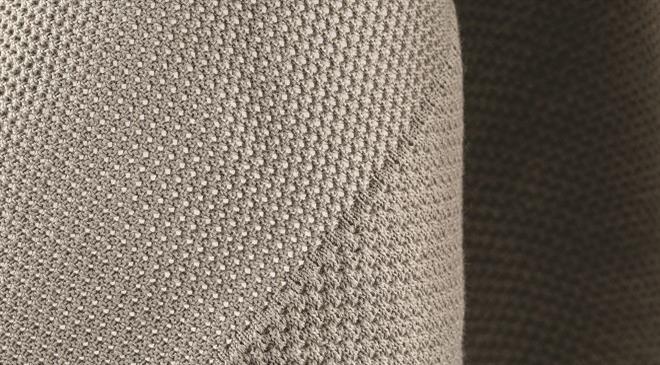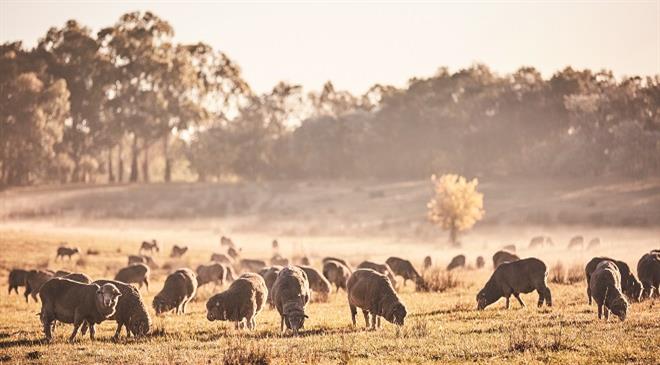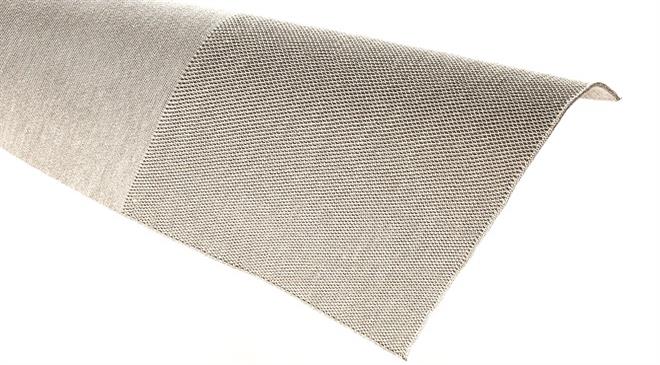Australian Merino wool is the world’s premium natural fibre
The Woolmark Company is the global authority on Merino wool and owns the woolmark logo, a quality assurance symbol applied to more than five billion products. The Woolmark brand represents a commitment between woolgrowers, brands and consumers on the authenticity and quality of the fibre. In an interview with Fibre2Fashion, Chief Executive Officer of Australian Wool Innovation John Roberts discusses Merino wool, the Australian wool industry, and The Woolmark Company which is owned by Australian Wool Innovation.
What major changes have you noticed in the Australian wool industry during the COVID-19 pandemic?
Australia itself, especially our rural areas where wool is grown, was not badly affected by the pandemic in comparison to other countries, so the production and quality of Australian wool remained pretty much as normal.
However, we saw major changes in consumer purchasing of products. In particular, we saw a drop off in purchases of suiting and formal/office/occasion wear, due to the lockdowns when people were forced to work from home and precluded from holding social events. More recently, we have seen these markets pick up again as the lockdowns end.
While formal wear has struggled during the past couple of years, in contrast we have seen strong demand for knitwear and accessories. We have also seen an increase in demand for sports and activewear as people have focused more on their health and welfare; this suits Merino wool which is perfect for the sector due to the fibre’s natural breathability, thermoregulation, elasticity, softness next to skin and anti-odour properties.
Please tell us about your relationship with Australian wool.
I stem from a wool-growing family at a town called Binalong in the Australian state of New South Wales. Before joining Australian Wool Innovation (AWI), the parent company of The Woolmark Company, I worked in private agribusiness companies, including as a wool buyer, trader and processor. Prior to being appointed as Chief Executive Officer of AWI, I worked in a wide range of roles at AWI including managing international offices and being the company’s Chief Operating Officer.
How is Australian Merino wool different than other wool?
Merino wool is the world’s finest wool, which provides a superior range of natural qualities such as its softness next to the skin and beautiful drape. It is a unique fibre, loved by fashion and apparel designers for its quality and versatility, which makes it suitable for applications from luxury fashion to high-performance activewear.
Australian Merino wool is regarded by many as the finest and softest Merino wool produced anywhere. Australia has the world’s most advanced wool industry, which applies not only to the wool-growing itself; Australia has a trained and registered workforce of about 17,000 wool-classers who prepare clean white Merino wool for the world’s processors, and there are objective laboratory test results attached to almost every bale of Merino wool that is exported from Australia.
What are the precautions and learnings that have been taken by AWI to counter a pandemic scenario in future?
For many years, AWI has had a focus on being a digital-first company. So as a company we were already set up very well to cope with remote working and digital communications. However, we have continued to digitise and simplify many of our processes, such as interacting with our Woolmark licensees, and the presentation of The Wool Lab wool fabric and yarn sourcing guide.
Furthermore, the pandemic accelerated the trend for more apparel purchases being made online, so many of our marketing collaborations now have a major digital element. In addition, The Woolmark Company increasingly collaborates on campaigns directly with the world’s leading online retail platforms such as Amazon, Zalando and Farfetch.

Is any research and marketing being carried out to make wool acceptable for everyday wear in tropical climates like India?
Advances in manufacturing technology when combined with the fineness of Australian Merino wool mean that very lightweight fabrics can be made using the fibre.
Furthermore, the natural properties of the Merino wool fibre itself makes it ideal for warmer climes. In contrast to synthetics, Merino wool is an active fibre that reacts to changes in body temperature. So, it helps you stay cool when the weather is hot, as well as warm when the weather is cold. Also, Merino wool clothing is extremely breathable and less prone to clamminess; it can absorb large quantities of moisture vapour and then move it away to evaporate into the air. And, of course, Merino wool is super soft next to the skin and has natural anti-odour properties.
What is the global size of the Merino wool market? And what percentage of it is accounted for by Australia?
There are currently about 275 million kg of Merino wool (clean) produced in the world each year. Australia produces about 180 million kg, so that’s about 65 per cent of the global total. However, Australia’s Merino wool tends to be finer and better quality than other country’s Merino wool, so about 90 per cent of the Merino wool used in the world’s fine apparel comes from Australia.

How is wool more environmentally friendly compared to other fibres like cotton, polyester and nylon?
In contrast to synthetic fibres, wool is a natural, biodegradable and renewable fibre, making it the perfect choice for those seeking clothing that has a minimal impact on the environment.
Every year, our sheep produce a new fleece, making wool a completely renewable fibre source. In contrast, synthetic fibres are derived from non-renewable petrochemicals and fossil fuels, which when extracted de-sequester carbon stored millions of years ago.
Wool is made of a 100 per cent natural biodegradable protein, similar to that found in human hair. When a wool product reaches its end-of-life and is disposed of, the wool fibre readily decomposes in soil, slowly releasing valuable nutrients and carbon back into the earth, acting like a fertiliser. In contrast, synthetic fibres do not biodegrade but instead accumulate in landfill and release microplastics in our oceans or on our land.
How often clothes are worn is the most influential factor in determining environmental impacts from clothing. Wool garments are on average kept in use for longer periods of time than garments made from other fibre types. In addition, research shows that consumers wash wool clothing less frequently than other fibre types, saving water, energy and detergent associated with laundering. Wool’s attributes are so highly valued that even after a garment has finished its long service life with one person, the fibre is still suitable to be kept in use. So, of the major apparel fibres, wool is the most reused and recycled fibre on the planet.
What is the work of Woolmark in China? Is there any impact of Australia-China relations?
Given the country’s importance as a processing market and also as a consumer market for Australian wool, The Woolmark Company has a relatively large workforce in China that undertakes R&D, educational and marketing activities. The Australian and Chinese wool industries have had and continue to have a very good relationship, which I am sure will continue.
What is Woolmark certification? What is the objective of the programme?
The Woolmark licensing programme is a textile quality assurance and product certification scheme that guarantees fibre content and quality to consumers and the entire supply chain.
If a brand or retailer uses licensed yarn or fabric, or use a licensed knitter or garment maker, they are entitled to a licence and the brand becomes part of the Woolmark global network, giving them access to a range of resources from The Woolmark Company. This includes the use of the world-famous Woolmark logo on their product.
The Woolmark logo is the world’s best-known textile quality fibre brand. Trusted by consumers for more than 50 years, the Woolmark brand has adorned more than five billion products since the creation of the original mark in 1964.
What actions are being taken by The Woolmark Company to meet the growing demand for sustainable fashion and animal welfare?
The Woolmark Company continues to educate brands and the supply chain about wool’s natural eco-credentials and, increasingly, its suitability and benefits for the circular economy. In contrast to synthetic fibres, wool fits into a sustainable circular model of textile production that minimises waste and pollution. As mentioned above, wool has a unique set of ‘circular’ features – such as being a renewable and biodegradable fibre, suitable for reuse and recycling, and free from microplastics – which should make the fibre more sought after by designers, brands and retailers.
The Woolmark Company not only presents the scientific evidence, but also provides a pathway for designers and brands to incorporate wool into their products to lighten their eco-footprint and demonstrate an alignment to circularity. For example, The Woolmark Company has created an online Circularity Hub on its website at www.woolmark.com/circular-design. This is a launchpad for brands and designers to learn about all aspects of the circular economy, the different cycles within the system, and how best to integrate circular design principles into their work.
For today’s discerning customer, ethical and environmentally sensitive farming can be as important as the quality of the clothing itself. Australian Merino wool achieves the highest standards across all these areas. Well looked-after sheep living in a good environment produce the best wool. So, Australia’s Merino farmers are committed to exceptionally high standards of animal welfare, sustainable farming for the benefit of future generations, and responsible use of land and water resources.
In terms of price, how does Merino wool compare with other fibres?
Merino wool tends to be more expensive than other fibres. But Merino wool is very much a premium fibre and consumers are willing to pay more for a quality product made from a premium fibre. Furthermore, as a natural and circular fibre, Merino wool is becoming more attractive to consumers who are concerned about the environment and the effect of their purchases on the planet.
What is the significance of the International Woolmark Prize to the global fashion industry?
Relaunched in 2012 by The Woolmark Company, the International Woolmark Prize is an illustrious fashion award and talent development programme for the world’s most promising design talent. Every year, the designers develop and present their most innovative designs, with the collections made from at least 70 per cent Australian Merino wool, to a panel of judges comprising distinguished industry heavyweights.
But the International Woolmark Prize programme is a lot more than a fashion design award. The programme runs across an 18-month cycle and provides the international designers with education, mentorship, networking opportunities, early-stage funding, global wool supply chain access and commercialisation. It generates long-term demand for Australian Merino wool by increasing the knowledge of and lifetime loyalty to the fibre amongst the award’s designers and more than 400 alumni around the globe.
Furthermore, the phenomenal interest in these awards from fashion communities and media globally has helped put wool back on the agendas of a broader range of fashion designers, manufacturers, brands and retailers, and consequently into retail stores for consumers to purchase.
Connecting the world’s leading fashion designers with Australian Merino wool is extremely important due to the enormous influence these designers have in setting global textile trends for mainstream retail brands.

As the new CEO of AWI what are your priorities for the organisation and for the India market?
I remain committed for AWI to effectively and efficiently deliver on-farm and off-farm R&D, as well as expand the commercial opportunities for Australian wool across the world, including India. It is critical that we adopt a clear, swift and practical approach to the many challenges and opportunities that sit before us, in both the off-farm and on-farm areas.
In the short term, there is still uncertainty regarding COVID-19 and its ongoing effect on our key markets, plus we have to ensure that the environmental impact labelling proposals in the European Union are considered by the authorities there correctly and appropriately.
Fundamentally though, I believe that the long-term consumer trends towards products that are environmentally friendly, and health and wellness, play in wool’s favour.
Which countries/regions are the biggest markets for the Australian wool?
The majority of Australian wool is exported directly to China for processing. However, India is pretty much the second largest importer of our wool behind China. The elimination of the 2.5 per cent tariff on Australian wool imports into India, announced in April this year as part of the new Australia-India Economic Cooperation and Trade Agreement (ECTA), is likely to increase the amount of Australian wool imported into India for processing.
In terms of consumer markets, the key markets for apparel products containing Australian wool are the large and lucrative northern hemisphere markets of Britain and Europe, the US, and Asian markets such as China, Japan and South Korea. India is also an important market for us.
What is the best thing you suggest consumers to do at the end of life of a woollen garment?
Reuse the garment by passing it on to friends or family. However, if it is beyond use and repair, it can be recycled. Wool is the most recyclable fibre on the planet. ‘Closed loop’ recycling involves high-value wool garments deconstructed to enable new yarns to be spun and new high-value garments fabricated. Meanwhile, ‘open loop’ recycling is essentially ‘down cycling’, in which wool products are pulled apart and fabricated into cheaper nonwoven products for insulation, padding, interiors, etc.




